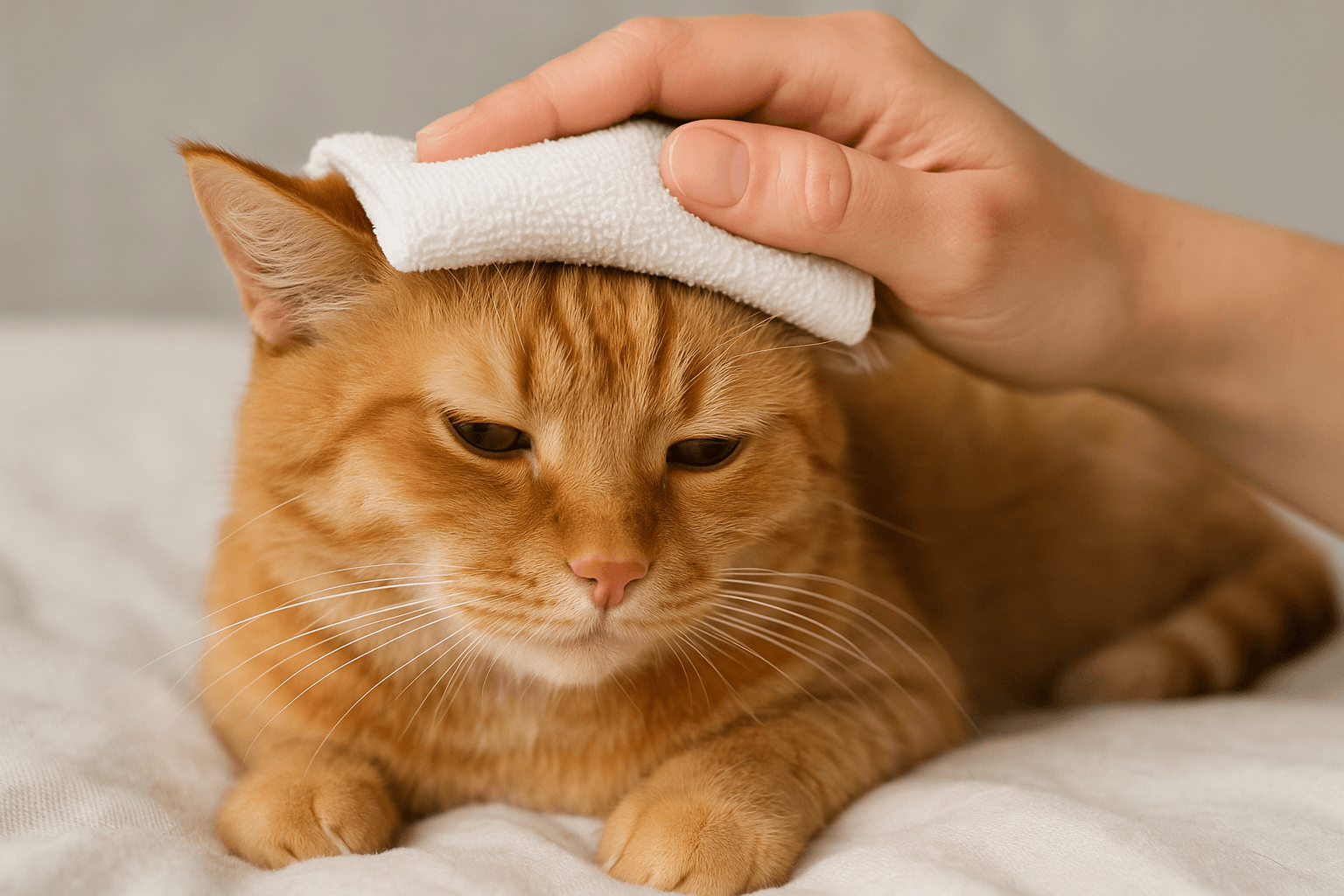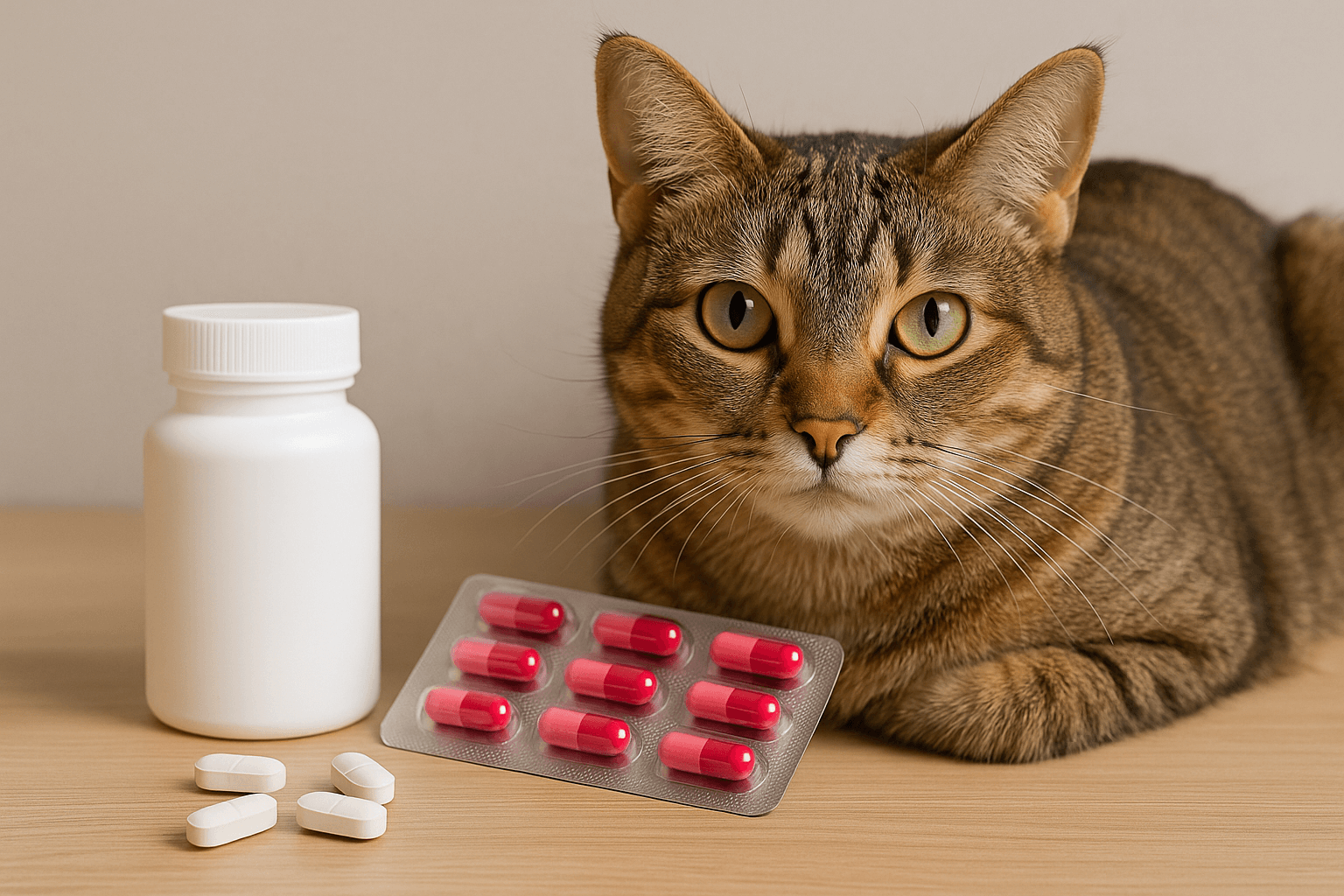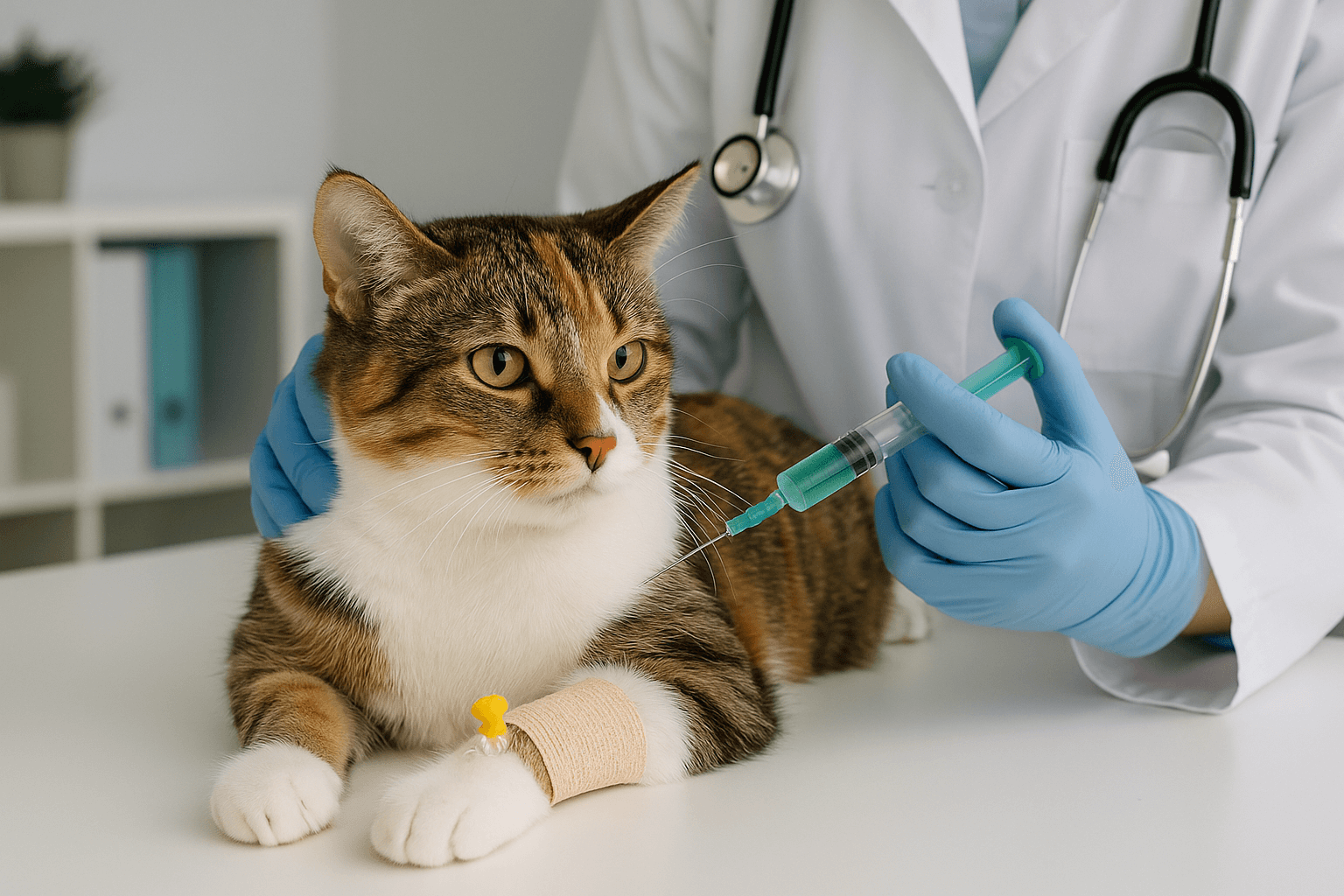Understanding Cat Paw Yeast Infections: Causes, Symptoms, and Treatment
A cat’s paws are essential for their daily activities—walking, playing, grooming, and exploring the world around them. However, these delicate structures can sometimes fall victim to infections, including yeast infections. While less common than other paw issues, a yeast infection in a cat’s paw can cause discomfort and irritation if left untreated. Yeast, a type of fungus, thrives in warm, moist environments, making your cat’s paws particularly vulnerable. As a responsible pet owner, it’s important to recognize the signs early and understand how to address this condition effectively.
In this article, we’ll explore everything you need to know about cat paw yeast infections, from prevention to treatment, ensuring your feline friend stays happy and healthy.
What Triggers Yeast Overgrowth in Cat Paws?
Yeast is naturally present on your cat’s skin, but an overgrowth can occur due to various factors. Understanding the root causes of yeast infections is the first step toward prevention and treatment. Here are some common triggers:
Excessive Moisture :
Wet or damp paws create an ideal environment for yeast to multiply.Allergies :
Food allergies or environmental allergens can compromise the skin barrier, allowing yeast to flourish.Poor Hygiene :
Infrequent cleaning of your cat’s paws can lead to the buildup of dirt and bacteria, promoting yeast growth.Underlying Health Conditions :
Diseases like diabetes or immune system disorders can increase susceptibility to yeast infections.Injury or Irritation :
Cuts, scrapes, or constant licking can damage the skin, creating openings for yeast to invade.
By addressing these potential causes, you can reduce the risk of yeast infections in your cat’s paws. Early intervention is key to preventing complications and ensuring your pet’s comfort.
How to Spot a Yeast Infection in Your Cat’s Paws
Recognizing the symptoms of a yeast infection is crucial for timely treatment. Cats are experts at hiding discomfort, so it’s up to you to observe any changes in their behavior or appearance. Here are some signs to watch for:
Redness and Swelling :
The skin between the toes or around the paw pads may appear inflamed.Itching and Licking :
Excessive licking or chewing of the paws indicates irritation or discomfort.Foul Odor :
A strong, unpleasant smell emanating from the paws is often a sign of infection.Crusty or Flaky Skin :
Dry, scaly patches on the paws suggest an ongoing issue.Lethargy or Behavioral Changes :
If your cat seems unusually tired or avoids using their paws, it could signal pain.
If you notice any of these symptoms, it’s important to consult a veterinarian promptly. Addressing the problem early can prevent further complications and restore your cat’s well-being.
Check this guide 👉Why Do Cats Lick Their Paws? Best 7 Behavior Tips!
Check this guide 👉When Your Cat Puts Its Paw on You: Best 7 Expert Tips!

Preventive Measures | Treatment Options |
|---|---|
Keep your cat’s paws clean and dry | Antifungal medications prescribed by vets |
Regularly trim fur around the paws | Medicated shampoos or wipes for paws |
Monitor for signs of allergies | Dietary changes to support skin health |
Avoid exposure to irritants | Topical ointments for localized relief |
Maintain a stress-free environment | Probiotics to balance gut flora |
How Veterinarians Identify Yeast Infections in Cat Paws
Diagnosing a yeast infection involves a combination of physical exams and laboratory tests. Understanding the diagnostic process can help you prepare for your vet visit and ensure accurate results. Here’s what typically happens during diagnosis:
Physical Examination :
The vet inspects the affected area for visible signs like redness, swelling, or odor.Skin Scraping Test :
A small sample of skin cells is collected and examined under a microscope for yeast presence.Cytology Analysis :
This test identifies the specific type of yeast causing the infection.Culture Test :
A culture may be used to determine the most effective antifungal treatment.Blood Tests :
Blood work helps rule out underlying conditions that might contribute to the infection.
Accurate diagnosis ensures targeted treatment, improving recovery chances. Always trust your vet’s expertise when dealing with your cat’s health.
Steps to Protect Your Cat’s Paws from Recurrence
Prevention is always better than cure when it comes to yeast infections. Once your cat has recovered, taking proactive measures can minimize the risk of future outbreaks. Here are some strategies to consider:
Regular Paw Cleaning :
Gently wash your cat’s paws with a damp cloth after outdoor playtime.Dry Thoroughly After Baths :
Ensure your cat’s paws are completely dry to prevent moisture buildup.Provide a Balanced Diet :
Nutrient-rich food supports a healthy immune system and skin barrier.Avoid Harsh Chemicals :
Use pet-safe cleaning products to avoid irritating your cat’s skin.Monitor for Allergic Reactions :
Keep an eye on your cat’s response to new foods or environmental changes.
By incorporating these practices into your routine, you can help safeguard your cat’s paws against future yeast infections. Prevention starts with vigilance and care.
How Your Cat’s Environment Can Influence Paw Health
While yeast is naturally present on your cat’s skin, certain environmental factors can create conditions that encourage overgrowth. Understanding these influences can help you make adjustments to reduce the risk of infection. Here are some common environmental contributors:
High Humidity Levels :
Moist environments provide an ideal breeding ground for yeast.Exposure to Dirty Surfaces :
Walking on unclean floors or outdoor areas increases the chance of contamination.Overcrowded Living Spaces :
Stress and close quarters can weaken your cat’s immune system, making them more vulnerable.Frequent Contact with Water :
Cats who spend time in wet grass or puddles are at higher risk for paw infections.Shared Litter Boxes :
Dirty litter boxes can harbor bacteria and fungi, increasing infection risks.
By addressing these environmental factors, you can create a safer and healthier space for your cat. A clean and stress-free environment goes a long way in preventing yeast overgrowth.
Natural Solutions to Support Your Cat’s Recovery
For mild cases of yeast infections, some pet owners turn to natural remedies as part of their care routine. While these methods should never replace professional veterinary treatment, they can complement prescribed therapies. Here are a few home remedies to consider under your vet’s guidance:
Apple Cider Vinegar Rinse :
Diluted apple cider vinegar can help restore pH balance and inhibit yeast growth.Coconut Oil Application :
Its antifungal properties may soothe irritation and promote healing.Probiotic Supplements :
Adding probiotics to your cat’s diet supports gut health and boosts immunity.Oatmeal Baths :
A gentle oatmeal soak can relieve itching and reduce inflammation.Herbal Teas for Soothing :
Chamomile or calendula tea compresses may calm irritated skin.
While these remedies can be helpful, always consult your vet before trying new treatments. Natural solutions work best when combined with professional care.
How Discomfort Affects Your Cat’s Well-Being
Yeast infections don’t just cause physical discomfort—they can also take a toll on your cat’s emotional state. Chronic itching, pain, and restricted mobility can lead to stress and behavioral changes. Recognizing these effects is essential for providing holistic care. Here’s how yeast infections might impact your cat emotionally:
Increased Irritability :
Persistent discomfort can make your cat more short-tempered than usual.Withdrawal from Play :
Cats in pain often avoid activities they once enjoyed, such as running or jumping.Changes in Eating Habits :
Stress or discomfort may lead to reduced appetite or picky eating.Excessive Vocalization :
Some cats express distress by meowing more frequently or loudly.Seeking Isolation :
Affected cats may hide more often, seeking solitude to cope with their condition.
Addressing both the physical and emotional aspects of a yeast infection ensures your cat feels supported throughout their recovery. Providing comfort and reassurance can strengthen your bond and help them heal faster.
Frequently Asked Questions About Cat Paw Yeast Infections
Can I treat my cat’s paw yeast infection at home?
Mild cases may improve with vet-approved treatments, but severe infections require professional care.
How long does it take for a yeast infection to heal?
With proper treatment, improvement is usually seen within 1–2 weeks, though full recovery may take longer.
Are certain breeds more prone to yeast infections?
Yes, breeds with folds or thick fur, like Persians or Maine Coons, are more susceptible.
Can diet affect my cat’s risk of yeast infections?
Yes, poor nutrition or high-carb diets can weaken the immune system and increase infection risk.
What should I do if the infection doesn’t improve?
Contact your vet immediately, as persistent infections may require advanced treatment.
Final Thoughts: Prioritizing Your Cat’s Paw Health
A yeast infection in your cat’s paw may seem like a minor issue, but it can significantly impact their comfort and quality of life if ignored. By staying informed about the causes, symptoms, and treatments, you can address the problem effectively and prevent recurrence. Remember, your cat relies on their paws for so much—exploring, playing, and simply enjoying life. Keeping those paws healthy is one of the best ways to show your love and care. With attention to detail and regular veterinary check-ups, you can ensure your feline companion enjoys many happy, itch-free years ahead.
Cat Fever Treatment: Best 7 Expert Tips! Discover expert advice on identifying, managing, and treating fever in cats to ensure their quick recovery and well-being.
Understanding Meloxicam for Cats: Best 7 Expert Tips! Learn how to safely administer meloxicam, manage side effects, and ensure your cat's comfort with expert advice on feline pain relief.
Amoxicillin for Cat UTI: Best 7 Expert Tips! Discover safe usage, dosage guidelines, and expert advice on treating feline urinary tract infections effectively with amoxicillin.
Understanding Cat Cancer Treatment: Best 7 Expert Tips! Discover expert advice on managing feline cancer, from early detection to treatment options, ensuring your cat’s health and comfort.





